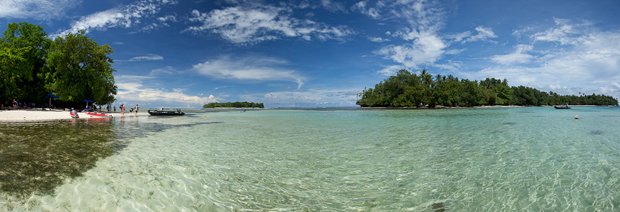Photography tips: panoramas

SOMETIMES YOU SIMPLY CANNOT capture the full width of your subject in one shot. Even a 24mm lens only covers just under 90 degrees, so sometimes it’s necessary to shoot a series of images and join them together.
In film days this was really hard, but now, after a decade of high quality digital photography, it’s almost trivial to stitch together a series of shots using the right software. Indeed, many cameras even have a stitch-assist mode which helps you line up the sequence of shots.
Essentially, you create a panorama by shooting a series of overlapping shots (30-50 per cent overlapping is about right) which cover your subject. Shooting left to right is best because they will line up in your photo browser in the correct order. Then you open the set of images in some photo stitching software (Adobe Elements, Adobe Photoshop, Autopano Pro, PTGui, Double take etc) and have the software join them together seamlessly.
This will work most of the time but, like all things photographic, there are ways to make the entire process work that much more smoothly:
1) If possible, shoot on manual so the exposures are the same for each shot. Set the correct exposure for the middle shot of the sequence and use that for all the shots.
2) Don’t use a polariser – this makes it harder for the software to seamlessly blend skies.
3) Keep the horizon towards the centre of the frame – tilting the camera up or down too much can lead to unexpectedly curved horizons.
4) Use manual focus – set the focus once and use the same focus setting for each shot.
5) Use a tripod where possible – hand holding is a fine option but using a tripod will allow you to be more precise with your overlaps and will give you a higher percent of sharp images. There is nothing worse than getting a great panorama in the bag only to find out later that one of the shots in the set is unsharp.
Nick Rains is a regular photographic contributor to Australian Geographic and was recently aboard an AG Society/Orion expedition to PNG. See more of his images of Purnululu.
RELATED STORIES

